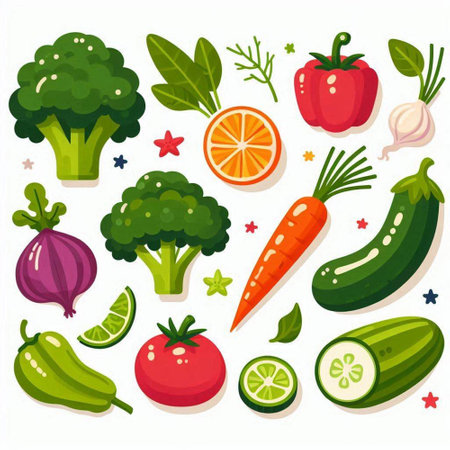Introduction to Horticultural Knives in British Allotments
Horticultural knives have long held a place of importance among the tools favoured by British allotment holders. With their origins tracing back centuries, these specialised blades were traditionally designed for tasks such as grafting, pruning, and harvesting. The evolution of horticultural knives has mirrored the changing practices within British gardening culture, adapting to both heritage methods and modern innovations. In recent years, there has been a noticeable resurgence in their popularity, driven in part by a growing appreciation for traditional hand tools and sustainable gardening approaches. Today, allotmenteers across the UK value horticultural knives not only for their practicality but also for the sense of craftsmanship and connection to the land they evoke. This renewed interest reflects broader trends within British allotment communities, where maintaining heritage skills and fostering a hands-on approach are highly prized.
2. Key Types of Horticultural Knives
Within the British allotment community, horticultural knives are essential tools for both amateur and seasoned gardeners. Understanding the key types available ensures efficient, safe, and precise gardening tasks. Below is a breakdown of the most commonly used horticultural knives in the UK, highlighting their typical uses and distinguishing features.
| Type of Knife | Key Features | Common Uses on Allotments |
|---|---|---|
| Pruning Knife | Curved blade, compact size, folding or fixed handle | Trimming shoots, removing deadwood, shaping shrubs and small trees |
| Grafting Knife | Straight, razor-sharp blade, sometimes with a bark lifter on the back edge | Making precise cuts for grafting fruit trees or ornamental plants; ideal for budding techniques |
| Harvesting Knife | Serrated or straight blade, robust handle for firm grip | Cutting vegetables (such as cabbages and lettuces), herbs, and soft fruits from the plant with minimal damage |
| Weeding Knife (Hand Weeder) | Narrow, pointed blade with an ergonomic handle | Extracting weeds from tight spots or between paving stones without disturbing surrounding crops |
| Budding Knife | Small, slightly curved blade with a rounded tip; often has a bark lifter tool | Budding roses and fruit trees by making clean slits for inserting buds into rootstock |
The choice of knife depends largely on the specific gardening task at hand. For instance, while pruning knives are favoured for regular maintenance of shrubs and perennials, grafting and budding knives are indispensable during propagation seasons in British allotments. Harvesting knives facilitate swift and clean crop collection, which is particularly important during peak harvest months. Each knife type is crafted to suit British horticultural practices and the unique conditions found on local allotments.

3. Essential Uses in Allotment Gardening
Within the context of British allotment gardening, horticultural knives serve a variety of crucial functions that cater to the unique demands of maintaining productive and healthy plots. Each knife is specifically designed to optimise key horticultural tasks, ensuring both efficiency and plant health.
Pruning for Plant Health
Pruning knives, often with curved blades, are invaluable for shaping fruit trees, soft fruits, and perennial plants found on many British allotments. Their sharpness allows for clean cuts that minimise damage and reduce the risk of disease entry. Regular pruning not only encourages robust growth but also helps manage space within densely planted plots.
Grafting for Propagation
Specialised grafting knives are employed by experienced allotmenteers seeking to propagate particular varieties or rejuvenate old fruit trees. The precision afforded by these knives ensures successful union between rootstock and scion—an important skill among those wishing to preserve heritage cultivars common in UK allotments.
Harvesting Crops Efficiently
A sturdy harvesting knife is essential during peak seasons when speed and accuracy are paramount. Whether lifting root vegetables like parsnips and carrots or cleanly cutting courgettes and squashes from their vines, these knives help maintain crop quality and reduce unnecessary waste.
General Maintenance Tasks
Beyond specialist applications, utility knives play a vital role in everyday maintenance. From trimming twine, splitting seed potatoes, opening compost bags to clearing stubborn weeds from tight corners, their adaptability makes them a staple in every British gardener’s toolkit.
The Right Tool for Every Task
Selecting the appropriate horticultural knife for each job not only streamlines work but also upholds best practices in plant care—a hallmark of successful British allotment gardening.
4. Choosing the Right Knife for Your Plot
Selecting the appropriate horticultural knife is pivotal to successful and efficient allotment management in the UK. With a diverse range of crops and gardening tasks, British plot holders must consider several factors when choosing their tools. Understanding which knife suits particular crops and caretaking routines can make daily maintenance more effective and enjoyable.
Considerations for Selection
When selecting a horticultural knife, it is essential to assess your typical allotment activities. British allotments often include a mix of root vegetables, soft fruits, woody perennials, and various herbs. Each requires specific cutting or trimming actions. The following table outlines common British crops alongside recommended knife types:
| Crop/Task | Recommended Knife Type | Key Features |
|---|---|---|
| Root Vegetables (e.g., carrots, parsnips) | Dibber Knife or Harvesting Knife | Pointed blade for digging; sturdy for leverage |
| Soft Fruits (e.g., strawberries, raspberries) | Pruning Knife | Curved blade for precision cuts; avoids plant damage |
| Woody Stems (e.g., currants, gooseberries) | Budding or Grafting Knife | Single-bevel edge; allows controlled incisions |
| Herbs and Salad Greens | Paring or Trimming Knife | Short, sharp blade; ideal for delicate snipping |
| General Maintenance (e.g., twine cutting, opening compost bags) | Folding Utility Knife | Portable; lockable blade for safety on site |
Sustainability and Durability Factors
For UK gardeners, durability and sustainability are increasingly important. Opt for stainless steel blades to withstand damp British weather, and consider knives with wooden handles from sustainable sources. Many plot holders also prefer locally made tools that support British craftsmanship and reduce environmental impact.
Practical Tips for Allotment Holders
- Test the grip: Wet conditions are common in the UK; ensure the handle provides a firm grip even when damp.
- Blade maintenance: Regularly sharpen your knives and store them dry to prevent rust.
- Tool storage: Use sheaths or dedicated tool boxes to avoid accidents and prolong tool life.
- Select multi-purpose tools: If space is at a premium in your shed, choose knives that can perform several functions.
Summary Table: Matching Knives to British Allotment Needs
| Allotment Task | Best Knife Choice |
|---|---|
| Lifting root crops in heavy soil | Dibber or Harvesting Knife |
| Pruning fruit bushes in winter | Budding/Grafting Knife |
| Tidying herb beds in spring/summer | Paring/Trimming Knife |
| Cutting twine/netting during setup or harvests | Folding Utility Knife |
By aligning your knife choice with your plot’s specific needs and typical British growing conditions, you ensure both efficiency and enjoyment throughout the gardening season.
5. Care, Safety, and Maintenance Tips
Maintaining horticultural knives is essential for gardeners on British allotments, where variable weather conditions can impact tool longevity and effectiveness. Adhering to best practices for care, safety, and maintenance ensures your knives remain sharp, functional, and safe to use throughout the seasons.
Best Practices for Maintaining Sharpness
Regular sharpening is crucial. Use a whetstone or diamond sharpener to maintain a keen edge; this not only improves cutting efficiency but also reduces the risk of accidents caused by slipping. Always clean your knife before sharpening to prevent grit from dulling the blade further. For British gardeners, sharpening after wet weather sessions is especially important, as moisture can cause rust that blunts the blade.
Safe Usage Guidelines
Safety should always be prioritised when handling horticultural knives. Always cut away from your body and keep your non-cutting hand clear of the blade’s path. Wear sturdy gloves to protect your hands from accidental nicks or slips—particularly in damp conditions commonly encountered on UK allotments. When transporting knives between plots or sheds, use a sheath or a designated tool carrier to prevent injuries.
Extending Knife Lifespan in UK Weather
British weather can be harsh on metal tools due to frequent rain and fluctuating temperatures. After each use, thoroughly dry your knife and apply a light coat of oil (such as linseed or mineral oil) to both the blade and handle to prevent corrosion and wood splitting. Store knives in a dry location—preferably inside a shed or sealed box—to avoid prolonged exposure to moisture. Periodically inspect handles for cracks or loose fittings; early repairs can prevent accidents and extend the tool’s usability.
Routine Cleaning Practices
After each session, remove soil, sap, or plant residue using warm soapy water and a soft brush. Avoid harsh detergents that may corrode the metal. Dry completely with a cloth before storage.
Summary
A commitment to regular maintenance, safe handling, and protection against British weather will ensure that your horticultural knives serve you reliably throughout many growing seasons on the allotment.
6. Cultural and Community Aspects
Within the British allotment tradition, horticultural knives are more than just practical tools; they are woven into the fabric of community life and cultural heritage. Allotments across the UK have long served as gathering spaces where generations come together to cultivate not only vegetables but also camaraderie and shared knowledge. The horticultural knife—whether a classic folding model or a bespoke hand-forged blade—often becomes a symbol of this collective identity. Its presence at communal work parties, seed swaps, or annual open days is almost as expected as the wheelbarrow or watering can. Many seasoned plot holders take pride in passing down their trusted knives to newcomers or family members, creating a sense of continuity and belonging. Knife care and sharpening tips are frequently exchanged alongside gardening advice, reflecting the collaborative spirit that defines British allotment culture. Furthermore, local competitions and community events sometimes feature demonstrations of traditional knife techniques, fostering appreciation for craftsmanship and time-honoured practices. In this way, horticultural knives embody both the practical needs and the social rituals of allotment life, reinforcing bonds between individuals and strengthening the wider gardening community.


